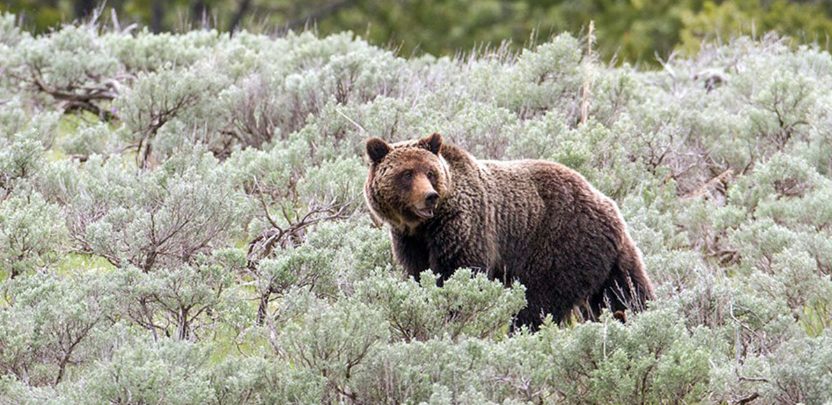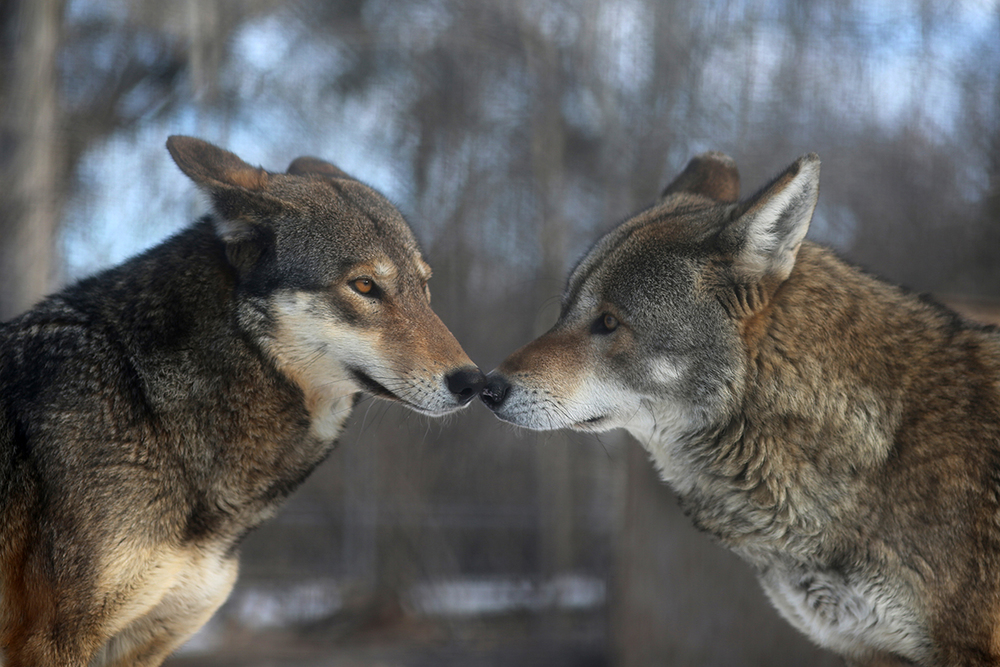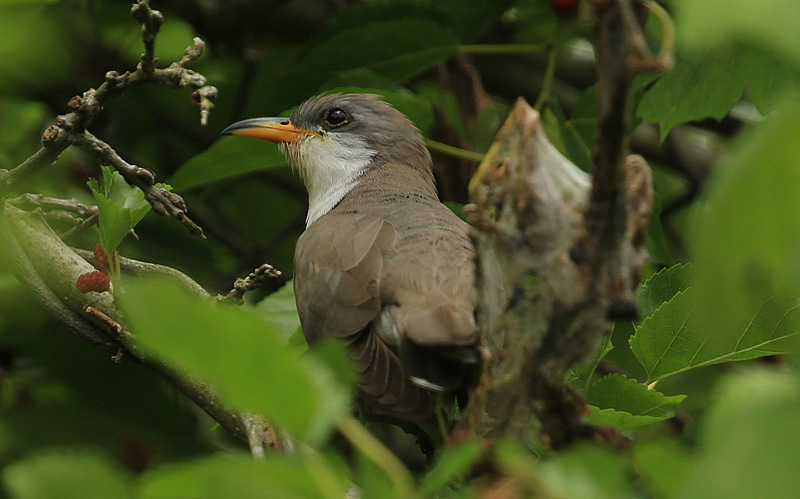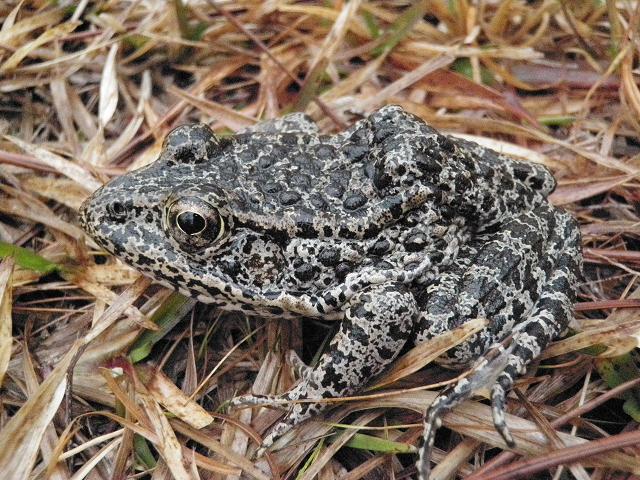
by Deep Green Resistance News Service | Sep 25, 2018 | Lobbying
Featured image: A grizzly bear in Yellowstone National Park. Jim Peaco / National Park Service
by Olivia Rosane / Ecowatch
A federal judge restored endangered species protections for grizzly bears in and around Yellowstone National Park on Monday, The Huffington Post reported, putting a permanent halt to plans by Wyoming and Idaho to launch the first Yellowstone-area grizzly hunt in four decades.
U.S. District Judge Dana Christensen had already placed a temporary restraining order on the hunts, which would have started Sept. 1 and allowed for the killing of up to 23 bears, while he considered the larger question of whether Endangered Species Act protections should be restored. The bears’ management will now return to the federal government.
Christensen wrote in his ruling that his decision was “not about the ethics of hunting.” Rather, he agreed with environmental and tribal groups that the Fish and Wildlife Service (FWS) had not considered the genetic health of other lower-48 grizzly populations when it delisted the Yellowstone area bears in 2017.
“By delisting the Greater Yellowstone grizzly without analyzing how delisting would affect the remaining members of the lower-48 grizzly designation, the Service failed to consider how reduced protections in the Greater Yellowstone Ecosystem would impact the other grizzly populations,” Christensen wrote, according to The Huffington Post. “Thus, the Service ‘entirely failed to consider an important aspect of the problem.'”
Bear advocates said the Yellowstone population was growing large enough to merge with other populations, which would be a win-win for the genetic diversity of all bears involved.
“The Service appropriately recognized that the population’s genetic health is a significant factor demanding consideration,” Christensen wrote. “However, it misread the scientific studies it relied upon, failing to recognize that all evidence suggests that the long-term viability of the Greater Yellowstone grizzly is far less certain absent new genetic material.”
Native American and environmental groups applauded the decision.
“We have a responsibility to speak for the bears, who cannot speak for themselves,” Northern Cheyenne Nation President Lawrence Killsback said in a statement Monday reported by The Huffington Post. “Today we celebrate this victory and will continue to advocate on behalf of the Yellowstone grizzly bears until the population is recovered, including within the Tribe’s ancestral homeland in Montana and other states.”
The FWS told The Washington Post it was reviewing the ruling.
“We stand behind our finding that the Greater Yellowstone Ecosystem grizzly bear is biologically recovered and no longer requires protection. . . . Our determination was based on our rigorous interpretation of the law and is supported by the best available science and a comprehensive conservation strategy developed with our federal, state, and tribal partners,” the FWS told The Washington Post.
The FWS first attempted to delist the bears in 2007, but that move was also blocked in federal court over concerns that one of the bears’ food sources, whitebark pine seeds, were threatened by climate change.
In its 2017 ruling, the FWS said that it had reviewed the case and found the decline of the whitebark pine seeds did not pose a major threat.
Grizzlies in the lower 48 states were first listed as endangered in 1975, when their historic range had been reduced by 98 percent.
The Yellowstone grizzlies numbered fewer than 140 at the time. The population has since rebounded to about 700, according to The Washington Post.
by Deep Green Resistance News Service | Aug 4, 2018 | Biodiversity & Habitat Destruction
by Jennifer Browdy, Ph.D. / Transition Times
We are living in epic times. Mighty planetary changes are underway, and perhaps our pop culture is so obsessed with superheroes because only legendary heroes could successfully battle the dragons we face today.
I have been writing Transition Times for seven years now. When I started this blog, I was following the lead of environmental activist writers like Bill McKibben, Mark Hertsgaard, Elizabeth Kolbert and Derrick Jensen, who were sounding the alarm about climate change and biodiversity loss, translating the sober measurements of science into terms a lay audience could understand.
In the climate change movement then, the watchwords were “mitigate” and “adapt.” We could mitigate the damage that climate change would cause by reducing carbon emissions, trying to keep things more or less under control while we busied ourselves with adapting, by, for example, shifting to renewable energy sources and hybridizing flood- and drought-resistant grains.
Meanwhile, wildlife biologists were keeping track of the grim march of the Sixth Great Extinction, already well underway—not only for animals but also for marine life and plants on land and sea.
Seven years on, the scenarios I was absorbing with shock, outrage and fear at the beginning of Transition Times have come true, and then some. Monster storms, floods, droughts, wildfires, heat waves, melting glaciers and tundra at the poles, staggering biodiversity loss, climate refugees (both human and non-human)—all of this has moved out of the realm of science fiction into the daily headlines.
Hence our desperate casting about for superhero help.
In the United States, the Gilgamesh crowd is in power—you remember Gilgamesh: the brawny young king who murdered the guardian of the cedar forest and cut it all down to build his grand city. Later in his epic he wanders around the world searching unsuccessfully for a route to immortality, strangely symbolizing the downfall of all humans who think only of short-term gain: you can’t take it with you.
Those at the helm of the U.S. economy today are willing to cut it all down. Who cares about helping endangered species? Who cares about national parks or ocean sanctuaries—drill, baby, drill! Who cares about the national debt? Print some more paper, acquire some more debt, let the suckers who come after us figure out how to pay.
And pay we will. The entire Earth community will pay for the savage destruction of climate and environment underway now. It’s not just the Sixth Great Extinction, it’s also a planetary reset we’re witnessing in these early years of the 21stcentury, on the scale of the shift from the Mesozoic to the Cenozoic eras, when the dinosaurs went extinct.
But this time, it’s not a meteor shaking things up on Earth. It’s the planet’s most successful species, homo sapiens—the smart apes—ruining things for everyone.
I am not proud to be a human being these days. I am not proud to be an American.
But I do cling to a tattered shred of hope in remembering the much-vaunted ethical, moral compass of humans, and the legendary innovative ingenuity of Americans.
If climate change, habitat and species loss continue unabated, we will be the first species on the planet to knowingly bring about our own destruction. For make no mistake, humans will go down with everything else on the planet. A few may survive—but civilization as we have created it, a la Gilgamesh, will go down.
Is this something we are really willing to have on our collective conscience?
Especially when we could have prevented it?
I take hope from the fierce rhetoric of Pope Francis, and other activists who are firing up environmental protection with religious fervor: Dr. Katharine Hayhoe is a great example of a scientist who is appealing to the faithful, and also using pop culture to reach the masses.
What’s needed now is a dramatic shift in cultural worldview: from Gilgamesh to Noah, from swash-buckling drill-slash-burn to the moral and technological leadership that gets an Ark built before the floods come.
Because the floods, they are a’comin’. They’re already here, along with the wildfires and droughts and heat domes and all the rest of it. The wild animals are feeling the stresses as much or more than humans…there’s no AC or helicopters coming for them.
Meanwhile our politicians are still busying themselves with archaic ideas like national borders and tariff tit-for-tats. Climate change knows no borders. Noah didn’t ask to see passports as he loaded the climate refugees, human and non-human, into his ship.
We are all Earthlings now. If there’s any upside to climate change, it may be that the fact of our global, interspecies interdependence is now blazingly clear and undeniable.
In the epic of the 21stcentury, we’re at a crossroads. Who will we follow, Gilgamesh or Noah? If we want to save ourselves and as many other beloved Earthlings as possible (plants, insects, birds, animals, marine life), there is no time to waste.
Noah is in all of us, and we’re all in this together. If we have the will, we can find ways to mitigate and adapt and survive what’s coming.
Can we find the will?
Every day is a cliffhanger lately…tune in next time for the next chapter of “Gilgamesh vs. Noah: The Epic Battle for the Future, No. 2018.”

by Deep Green Resistance News Service | Jul 22, 2018 | Biodiversity & Habitat Destruction
Featured image: critically endangered red wolves. Trump’s unprecedented rollback could doom hundreds of animals and plants to extinction.
by Center for Biological Diversity
WASHINGTON— In a massive attack on imperiled wildlife, the Trump administration announced a series of rollbacks today to the regulations implementing key provisions of the Endangered Species Act.
The three proposed rules from the U.S. Fish and Wildlife Service and National Marine Fisheries Service would severely weaken protections for hundreds of endangered animals and plants across the country. They would also ensure that hundreds of imperiled species awaiting protection — like the monarch butterfly and the American wolverine — either never get safeguards or face additional, extinction-threatening delays.
One set of regulatory changes would weaken the consultation process designed to prevent harm to endangered animals and their habitats from federal agency activities. A second set of changes would curtail the designation of critical habitat and weaken the listing process for imperiled species. A third regulation would gut nearly all protections for wildlife newly designated as “threatened” under the Act.
The proposals are part of a broader effort by Interior Secretary Ryan Zinke to undercut protections for wildlife and public lands.
“These proposals would slam a wrecking ball into the most crucial protections for our most endangered wildlife,” said Brett Hartl, government affairs director at the Center for Biological Diversity. “If these regulations had been in place in the 1970s, the bald eagle and the gray whale would be extinct today. If they’re finalized now, Zinke will go down in history as the extinction secretary.”
Under the proposal relating to federal consultations, impacts to critical habitat will be ignored unless they impact the entirety of an animal’s habitat — ignoring the fact that “death by a thousand cuts” is the most common way wildlife declines toward extinction.
The proposal will also prohibit designation of critical habitat for species threatened by climate change, even though in many cases these species are also threatened by habitat destruction and other factors. The proposal will also preclude designation of critical habitat for areas where species need to move to avoid climate threats.
“This proposal turns the extinction-prevention tool of the Endangered Species Act into a rubber stamp for powerful corporate interests,” said Hartl. “Allowing the federal government to turn a blind eye to climate change will be a death sentence for polar bears and hundreds of other animals and plants.”
The regulatory proposal addressing listing and critical habitat designations will gut wildlife agencies’ ability to designate critical habitat in unoccupied areas needed for recovery. Even though most endangered species currently occupy small fractions of their historic range, those areas would effectively be precluded from ever helping a species recover.
“Ordinary Americans understand that many species of wildlife have drastically declined in recent years, and that if we are going to save wildlife, we have to let them return to places they used to roam. Denying imperiled wild animals that ability means they have no future,” said Hartl.
Editor’s note: related story at Citing ‘Common Good,’ Nearly 1,500 Scientists Demand Congress Shield Endangered Species Act From GOP Attacks

by Deep Green Resistance News Service | Jul 16, 2018 | Lobbying
Featured image by Seabamirum/Flickr.
by Center for Biological Diversity
LOS ANGELES— The Center for Biological Diversity notified the U.S. Fish and Wildlife Service today of its intent to sue the agency for failing to protect lifesaving critical habitat for the western yellow-billed cuckoo.
The songbird once ranged widely in the western United States but has declined to as few as 350 pairs concentrated in Arizona, New Mexico and California. The Center has worked for its protection for two decades, first submitting a scientific petition to list it under the Endangered Species Act in 1998.
After more than a decade of delay, the Service finally listed the western cuckoo as threatened in 2014. The agency also proposed the protection of more than half a million acres of the species’ critical habitat, but it has failed to finalize the designation.
“After many years of delay, it’s time for the Fish and Wildlife Service to protect the cottonwoods and willows and other streamside homes of this tenacious songbird,” said Brian Segee, a senior attorney at the Center. “Caring for our western rivers is essential to the cuckoo’s survival. And river restoration also has huge benefits for people and communities that need healthy waterways.”
The yellow-billed cuckoo depends on healthy streamside areas for breeding, nesting and feeding. Its disappearance from vast expanses of its former habitat is due largely to damming of rivers, water withdrawal and livestock grazing. Climate change threatens the cuckoo with increased drought, and pesticide use and collisions with communication towers and other tall structures further imperil the bird.
Critical habitat designation would help address these threats by requiring federal agencies to consult with the Service when their actions may result in damage or destruction of the bird’s habitat.
“The cuckoo has to get critical habitat designated immediately if we hope to continue to hear its call along our western rivers and streams,” said Segee.
In an announcement last month, the Service issued a positive 90-day finding that a petition to delist the western cuckoo submitted by livestock, mining and extremist property-rights interests “may be warranted,” the first step toward potential delisting of the species. The Center is separately opposing that proposal.
Background
The western yellow-billed cuckoo winters in South America and summers in the western United States and parts of Mexico and Canada. Its range has drastically shrunk with the species no longer occurring in most of the northern half of its range in the West.
Today the bird survives in scattered locations in small numbers, including along California’s Sacramento, Eel and Kern rivers; the Colorado, Gila, Verde and San Pedro rivers in Arizona; New Mexico’s Gila and Rio Grande rivers; and scattered locations in Colorado, Idaho, Nevada, Texas, Wyoming and Utah. Historically it was common from the shores of Lake Washington in Seattle to the mouth of the Colorado River.
The cuckoo is a visually striking bird with a long tail with flashy white markings. It breeds in streamside forests of cottonwood and willow and is one of the few species that can eat spiny caterpillars, such as tent caterpillars, which the adult birds and their chicks gorge on in the spring and summer.

by Deep Green Resistance News Service | Jul 7, 2018 | Lobbying
Featured image: Dusky gopher frog courtesy USFWS
by Center for Biological Diversity
NEW ORLEANS— From economists and scientists to religious leaders and business owners, dozens of groups this week submitted “friend of the court” briefs asking the U.S. Supreme Court to maintain protections for 1,600 acres of “critical habitat” designated in Louisiana for endangered dusky gopher frogs.
“It’s inspiring to see so many people eloquently urge our nation’s highest court to protect endangered wildlife,” said Collette Adkins, a Center attorney fighting in the Supreme Court for the frog’s protections. “While these folks represent a wide range of interests, they’re united in supporting these little frogs, their habitat protections and the Endangered Species Act. Like most Americans, these scientists, businesspeople and faith leaders recognize that imperiled animals need a place to live.”
The U.S. Supreme Court in January granted a “petition for certiorari,” filed by the timber company Weyerhaeuser, to reconsider a June 2016 decision from a three-judge panel of the 5th Circuit Court of Appeals that upheld a 2012 rule establishing the frog’s protections.
That rule protects 6,477 acres of critical habitat in Mississippi and Louisiana, including 1,600 privately owned acres of unoccupied frog habitat in St. Tammany Parish, Louisiana. The panel held that the U.S. Fish and Wildlife Service reasonably concluded that the St. Tammany Parish land is essential for recovery of the frogs, which are now confined to just three sites in southern Mississippi — with only one site regularly showing frog reproduction.
The “friend of the court” briefs, also known as “amicus briefs,” filed this week ask the Supreme Court to affirm the panel decision. Volunteer lawyers and law students wrote the briefs, in a coast-to-coast effort to represent scientists, legal experts and others with economic, scientific, moral and aesthetic interests affected by this case:
- Landowners who value the presence of endangered species on their property and welcome efforts to preserve their habitats;
- Faith-based groups recognizing a shared commitment, rooted in religious teachings and principles, to care for the earth and its species;
- Scientists with expertise in conservation biology, including Stuart Pimm and E.O. Wilson;
- Frog experts who study amphibian ecology and have expertise in conservation of gopher frogs;
- Leading nonprofit conservation organizations with longstanding interests in protecting wildlife;
- Environmental law professors with expertise in the Endangered Species Act;
- Economists and law professors with expertise in economic theory, cost-benefit analysis, the valuation of environmental goods and environmental law and regulation;
- Former leaders of the Department of the Interior, ranging from the Nixon administration through the Obama administration, who administered and enforced the Endangered Species Act; and
- Small-business owners including ranchers, ecotourism entrepreneurs and artists, who make an economic case for biodiversity and stewardship.
The Center for Biological Diversity organized the amicus effort and, along with the Gulf Restoration Network, intervened in the case. Participating as parties in the litigation before the Supreme Court, the Center and GRN last week filed their brief in support of the frog’s habitat protections.
Background
The dusky gopher frog (Rana sevosa) is a warty, dark-colored frog with ridges on the sides of its back. When picked up, these frogs cover their eyes with their forefeet, possibly to protect their faces until predators taste their bitter skin secretions and release them. Gopher frogs spend most of their lives underground in burrows created by gopher tortoises — hence their name.
Once prevalent in Louisiana, Mississippi and Alabama, dusky gopher frogs are nearly extinct. More than 98 percent of longleaf pine forests — upon which the frog and many other rare animals depend — have been destroyed. Fire suppression, drought, pesticides, urban sprawl, highway construction and the decline of gopher tortoises have made this frog so rare it now lives in only a few small Mississippi ponds, with only one pond showing consistent frog reproduction.
In response to a Center lawsuit, the Fish and Wildlife Service listed the gopher frog as a federally endangered species in 2001. The lawsuit and advocacy by the Center also prompted the 2012 critical habitat designation at issue in the Supreme Court case. Additionally, in response to legal advocacy by the Center and Gulf Restoration Network, the agency released a final recovery plan for the frogs in 2015.





